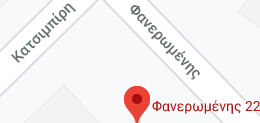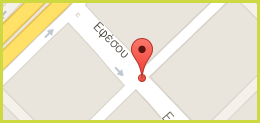Athens
Athens is the capital and the largest city of Greece. It is not only a modern European capital but also the oldest one. It delicately combines modernity with its ancient history on the same pot, therefore has wide variety of attractions from open museums to most trendy shopping centres.
Museums and Cultural Heritage
Parthenon which was dedicated to goddess Athena is the most important surviving building of the Classical Greece. Its construction was completed in 438 BC … (more information)
The Acropolis Museum is an archaeological museum exhibiting findings of the archaeological site of the Acropolis of Athens (Official Website).
National Archaeological Museum
The National Archaeological Museum is the largest museum in Greece and one of the world's greatest museums. Although its original purpose was to secure all the finds from the nineteenth century excavations in and around Athens, it gradually became the central National Archaeological Museum and was enriched with finds from all over Greece. Its abundant collections, with more than 20,000 exhibits, provide a panorama of Greek civilization from the beginnings of Prehistory to Late Antiquity [1]. (Official Website)
The Agora was the heart of ancient Athens, the focus of political, commercial, administrative and social activity, the religious and cultural centre, and the seat of justice. The site was occupied without interruption in all periods of the city's history. It was used as a residential and burial area as early as the Late Neolithic period (3000 B.C.). Early in the 6th century, in the time of Solon, the Agora became a public area. After a series of repairs and remodelling, it reached its final rectangular form in the 2nd century B.C. Extensive building activity occurred after the serious damage made by the Persians in 480/79 B.C., by the Romans in 89 B.C. and by the Herulae in A.D. 267 while, after the Slavic invasion in A.D. 580, it was gradually abandoned. From the Byzantine period until after 1834, when Athens became the capital of the independent Greek state, the Agora was again developed as a residential area. (more information)
The museum houses Greek works of art from the pre-historical to modern times, an extensive collection of Asian art. It also hosts periodic exhibitions and maintains a state-of-the-art restoration and conservation workshop. Although the museum initially housed a collection that included Islamic art, Chinese porcelain and exhibits on toys, its 2000 re-opening led to the creation of satellite museums that focused on specific collections, allowing the main museum to focus on Greek culture over the span of the country's history. (Museum website)
The National Garden is a public park of 15.5 hectares (38 acres) in the centre of the Greek capital, Athens. It is located directly behind the Greek Parliament building (The Old Palace) and continues to the South to the area where the Zappeion is located, across from the Panathenaiko or Kallimarmaro Olympic Stadium of the 1896 Olympic Games. The Garden also encloses some ancient ruins, tambourines and Corinthian capitals of columns, mosaics, and other features. The main entrance is on Leoforos Amalias, the street named after the Queen who envisioned this park. You can also enter the garden from one of three other gates: the central one, on Vasilissis Sophias Avenue, another on Herodou Attikou Street or the third gate which connects the National Garden with the Zappeion park area. In the National Garden the visitor will discover a duck pond, a small zoo, a Botanical Museum, a small cafe and a Children's Library and playground.
The full list of museums along with extensive information could be found here.
Shopping in Athens
Kolonaki
Fashionistas, head to the shops in Kolonaki. The neighborhood of the "elite" Athenians, it traditionally houses top designers and expensive retail boutiques. Greek design houses are located around the main square known as Platia Kolonakiou. Chic boutiques -- carrying '60s- inspired stilettos and clutches, form-fitting crystal studded T-shirts and fancy cocktail dresses and tailored designer suits for men -- can be found on Anagnostopoulou, Skoufa, Tsakalof and Haritos streets, while high-end international brand name chains are found along Voukourestiou Street.
Historic Center
The allure of shopping in Athens' historic centre is obvious from the mix of people from around the world that stroll and shop here daily. Plaka and Monastiraki are the main shopping, eating and sightseeing areas. This is where you go to buy gifts for friends and relatives: souvenirs, folk art and traditional Greek wares such as pottery, worry beads, handmade leather sandals and bags. Woven rugs, intricate tablecloths, linens and carpets are sure to be appreciated by all. Don't miss the outdoor bazaar at Monastiraki's Avissinia Square on Sundays for a gallery of bargain antique mirrors, wood furniture and bric-a-brac. Explore the streets off Athinas Street for a view into the Athens of the '60s, where small storekeepers maintain their exclusive shops of all sorts, from leathers to metal and glass works. Gourmands scoop into the barrels of olives, herbs and spices along Evripidou Street. Theseion and Psirri, at the base of the Acropolis and just across Athinas Street, is where you can stop and take a break before you check out the art galleries and vintage shops that are starting to flourish in these most charming of Athenian districts. Stadiou and Panepistimiou Avenues, connecting at Syntagma and Omonoia, are up and coming boulevards hosting large department stores. International brand names, cosmetics, fabrics, beads, gold and silver jewellery, and European-made leather shoes, boots and more shoes can be purchased at the pedestrian-only street Ermou and adjoining streets that stretch from Kolonaki to Syntagma
Major Shopping Areas
Ermou Street, nestled in the heart of Athens, is the most famous shopping promenade and one of the best choices in Athens for clothing, accessories and quality souvenir shopping. Especially if you are looking for shoes, Ermou Street is the best choice as it offers a great number of shoes’ stores!
You can access Ermou Street via the Metro: Syntagma or Monastiraki Stations
Kifissia: Another luxury shopping promenade in Attica is Kifissia. Gucci, Louis Vuitton, Bottega Veneta, Ralph Lauren, Armani and the list of famous brands does not end here, in one of the most high-class suburbs of Athens!
Access via the normal Train: Kifissia station
Halandri area is, without a doubt, one of the best shopping spots in Athens. A wide market which combines a great variety of shops mostly nestled within crossing pedestrian streets. Here you can not only find the most expensive brands but also affordable ,quality goods, including clothes, accessories shoes books, electronic equipment, toys, furniture, home products and more!
Access via the Metro: Halandri station and then a normal bus route (450, 460, 444, 19)
Complaints
The Consumer Protection Agency of Greece (KEPKA) or the General Associations of Consumers (INKA) gives you the opportunity to express your complaints and allegations. If anything illegal, misleading or false comes to your attention, do not hesitate to call 801-11-17200 or visit www.kepka.org and www.inka.gr to express your complaint.
Shopping Malls in Athens
The Mall
http://www.themallathens.gr/index.php?option=com_content&task=view&id=15&Itemid=42
The Attika Department Store
http://www.atticadps.gr/home.php?lang=en
Athens Metro Mall
http://www.athensmetromall.gr/en/athens-metro-mall/
Golden Hall
http://www.goldenhall.gr/index.php?option=com_content&view=article&id=61&Itemid=105&lang=en
Athens Heart (Address: Πειραιώς 180, Κόμβος Χαμοστέρνας)
http://www.athensheart.gr/stores
Mc Arthur Glen Athens
http://www.mcarthurglenathens.gr/en/outlet-information/location-and-travel
Nightlife in Athens
The most famous areas include Gazi, Psirri, Metaxourgio, Monastiraki, Theseion and Kolonaki. Traditional Greek evenings can be spent in Plaka.
At Psirri you will find some of Athens' hottest clubs and bars. Large and small, they play all types of music from Greek, rock and ethnic to Latin, pop and jazz. Psirri has become an Athenian favourite. A tour to Athens nightlife would not be complete without a visit to the industrial district of Gazi. Most of the galleries, mainstream bars, restaurants, clubs and Greek nightclubs here (featuring live Greek pop singers), are trademarked by their industrial design as many of them are housed in remodelled -- and once abandoned -- factories. Gazi is one of the trendiest neighbourhoods of Athens nightlife. Plaka - Monastiraki are two ancient, historic and all-time classic Athenian neighborhood. Plaka and Monastiraki do not have many big dance clubs and bars, but offer lively, traditional places to enjoy Greek culture year-round as well as several rock and jazz clubs. You will find plenty nightclubs with live Greek music along Syggrou Avenue and at the industrial strips of Iera Odos and Pireos Street in Gazi. In the summer months, the action moves to Poseidon Avenue and the coastal towns of Glyfada, Voula and Vouliagmeni. Kolonaki is a staple dining and entertainment destination, catering to the city's urban working professionals who enjoy an after work cocktail at many of its bars that are open - and busy - until after midnight, even on weekdays. The clubs here are also very chic. Exarchia is where to go for smaller more bohemian style haunts that cater to artists and college students. At the foot of Strefi Hill is where you will find most of the bars and clubs, many of which play rock music.
Climate
|
|
Daily Mean |
Daily Mean |
Mean Total Rainfall (mm) |
Mean Number of Rain Days |
|
Jan |
5.2 |
12.5 |
56.9 |
12.6 |
|
Feb |
5.4 |
13.5 |
46.7 |
10.4 |
|
Mar |
6.7 |
15.7 |
40.7 |
10.2 |
|
Apr |
9.6 |
20.2 |
30.8 |
8.1 |
|
May |
13.9 |
26.0 |
22.7 |
6.2 |
|
Jun |
18.2 |
31.1 |
10.6 |
3.7 |
|
Jul |
20.8 |
33.5 |
5.8 |
1.9 |
|
Aug |
20.7 |
33.2 |
6.0 |
1.7 |
|
Sep |
17.3 |
29.2 |
13.9 |
3.3 |
|
Oct |
13.4 |
23.3 |
52.6 |
7.2 |
|
Nov |
9.8 |
18.1 |
58.3 |
9.7 |
|
Dec |
6.8 |
14.1 |
69.1 |
12.1 |
Athens on Foot
Path 1 Historical Centre of Athens
5 km walk starts from Temple of Olympian Zeus and end in the Acadimia Platanos.
The map: http://goo.gl/maps/edXlK
- The Temple of Olympian Zeus also known as the Olympieion or Columns of the Olympian Zeus is a colossal ruined temple in the centre of the Greek capital Athens that was dedicated to Zeus, king of the Olympian gods. Construction began in the 6th century BC during the rule of the Athenian tyrants, who envisaged building the greatest temple in the ancient world, but it was not completed until the reign of the Roman Emperor Hadrian in the 2nd century AD some 638 years after the project had begun. During the Roman periods it was renowned as the largest temple in Greece and housed one of the largest cult statues in the ancient world.
- The Theatre of Dionysus Eleuthereus is a major open-air theatre and one of the earliest preserved in Athens. It was used for festivals in honor of the god Dionysus. It is sometimes confused with the later and better-preserved Odeon of Herodes Atticus, located nearby on the southwest slope of the Acropolis
- Acropolis of Athens
- Agora is a unified architectural complex constructed between 19-11 B.C. consisted of a large rectangular yard surrounded by columns, while its porches housed many different shops. North of the complex there was a library (a rectangular building with size 122x82 m), which was built in 132 A.D. by Adrianus.
- Keramikos, the archaeological site of the Kerameikos comprises part of the Themistoclean Wall, the Dipylon Gate and Sacred Gate, the Pompeion, the burial enclosure of the Stele of Hegeso, the Demosion Sema, and other well-known monuments. The entrance to the approximately eleven acre archaeological site is located on Ermou Street.
- Acadimia Platanos: This area was inhabited from prehistoric times and took its name from hero Akademos or Ekademos. During the 6th century one of the three famous Gymnasiums in Athens was built in this area. Nowadays, however, the area is famous because of the well-known Philosophy School, which was established in 387 B.C. by Plato and flourished during the time of Neo-Platonists.
Path II Byzantium Churches in Plaka Area
Approximately 3 km walk starts from the Church of Panaghia Kapnikarea and ends in Monastiraki metro station.
The map: http://goo.gl/maps/E5z5K
- Church of Panaghia Kapnikarea: It is estimated that the church was built sometime in the 11th century, perhaps around 1050. As it was common with the early Christian churches, this was built over an ancient Greek pagan temple dedicated to the worship of a goddess, possibly Athena or Demeter.
- Palaia Mitropoli: This beautiful church is located near new Metropolitan. It was built in the end of 12th century in honor of Panagia Gorgoepikoo and Aghios Eleftherios. For its construction many ancient and Byzantine bas-reliefs were used. On its front there is an ancient frieze that comes from a monument dating back to the 4th century and revives the formal Attica celebrations.
- Aghios Nikolaos Ragkavas: It is located close to Anafiotika area in Plaka. This church was built in the 11th century and was part of Ragkava family Palace. Member of this family was Michael the 1st, emperor of Byzantium. The church took its name from the area, which at that time was called Ragkavas.
- Aghia Ekaterini: It is close to Lysicrates Monument, in the middle of the homonym square, under the shadow of a palm tree. Its construction dates back to the 11th – 12th century. Some Romaic monument ruins are still located on the corner of the square.
- Sotiras of Kotaki: It is better known as Aghia Sotira. This church is in Kydathinaeon Str. right opposite of the Museum of Greek Folk Art. It was built in the 11th-12th century and has been through many later alterations and extensions.
- Aghioi Apostoloi of Solakis (Ancient Agora): This church is located inside the excavation area of Ancient Agora. It is one of the oldest churches of Athens (1000-1025 A.D.) and was built on the ruins of a Romaic nymphaeum of the 2nd century. During the 50’s and after its restoration, it took again its initiative form. Many Post Byzantine frescos that were found in other demolished churches were transferred to Aghioi Apostoloi.
- Pantanassa (Monastiraki Square): The three aisled basilica of the 10th century belonged to the monastery Koimisis tis Theotokou (Assumption of the Virgin Mary), from which the whole area took its name. Before that it was monastery dependency of Kaisariani monastery.
Path III Lycabettus
Walking path starts from Lycabettus hill and ends in Panepistimiou Station approximately 3 km walk mostly hill down. You can take any small path towards the neapoli as shown on the map. The area between Mavromihali Street and Lycabettus is the oldest region in Athens after Plaka.
http://goo.gl/maps/lJmFj
Mount Lycabettus, is a Cretaceous limestone hill in Athens, Greece. At 277 meters (908 feet) above sea level, the hill is the highest point in the city that surrounds it. Pine trees cover its base, and at its two peaks are the 19th century Chapel of St. George, a theatre, and a restaurant. The hill is a popular tourist destination and can be ascended by the Lycabettus Funicular, a funicular railway which climbs the hill from a lower terminus at Kolonaki (The railway station can be found at Aristippou Street). Lycabettus appears in various legends. Popular stories suggest it was once the refuge of wolves, possibly the origin of its name (which means "the one (the hill) that is walked by wolves"). Mythologically, Lycabettus is credited to Athena, who created it when she dropped a mountain she had been carrying from Pallene for the construction of the Acropolis after the box holding Erichthonius was opened.
The hill also has a large open-air theatre at the top, which has housed many Greek and international concerts.










